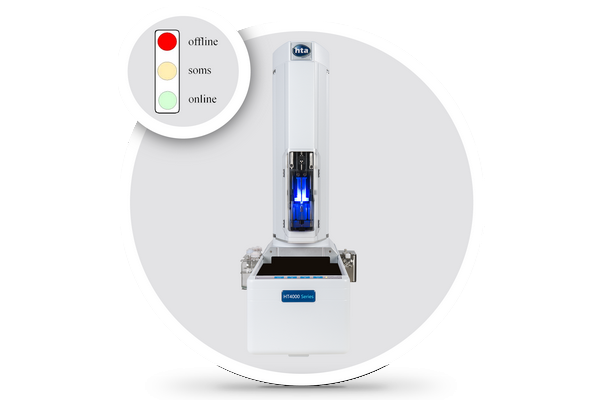Sample preparation: Online or Offline? That is the question

Sample preparation in an automated analytical process can be managed either by online or offline workstations. In this post we try to review all the multiple factors and variables that should be exanimated in deciding whether to opt for the first or second option.
Online sample preparation means that the workstation used for sample preparation is also used for injecting the sample into the analyzer and for starting data acquisition, while offline sample preparation involves removing samples from the workstation and then injecting them into the analyzer. Many crucial factors should be evaluated before taking the decision about online or offline sample prep.
First of all, you should consider the sample prep throughput versus the analysis throughput. If the time taken for each sample by the sample preparation workstation and the analysis are similar, an online sample preparation workstation can be the most efficient solution, while in a case where sample preparation is a quicker process than analysis, the sample preparation workstation could serve more than one analyzer, which can only be done in an offline system.
Other elements to be considered are eventual installation constraints. The presence of degradation factors close to the analyzer (such as the heat generated by a GC) will drive to opt for an offline sample prep solution in order to minimize the stress on samples. Also, the shortage of space can bring to opt for an offline sample preparation that allows a greater range of workstation layouts.
Also, the laboratory organization must be evaluated. In a laboratory where sample preparation and analysis are under the responsibility of two different staff teams, an offline sample preparation system will have the advantage of allowing the processes to be kept separate; while with regards to traceability, an online sample preparation workstation ensures easier tracking and control of the process.
When making your choice, you have to take into consideration also the downtime risk (for example analyzer or workstation out of order: undesirable but even possible event!). With regards to downtime risk, the offline workstations perform better.
The most important driver in deciding whether to use an offline or online sample preparation workstation is the sample size, in particular the relative size of the primary and injectable samples. If the primary sample size is much larger than the injectable sample it is much more effective to opt for an offline workstation (workstation is configured to handle bigger amounts of samples, while the analyzer carries the tools for injecting samples in the smaller quantity of samples needed for the analysis).
So, we can conclude that there is no univocal answer to this dilemma about online or offline sample prep, but the best approach can be found for each lab, looking at each of the key points considered above.
Get the Full White Paper “Online or Offline Sample Preparation”
Latest News
- How to reduce Power consumption and minimize technical Gas usage
- HOW TO VIDEO: Repackage HTA Autosampler
- LEANPREP BOARD: Ready to embrace lean in your lab?
- HTA is thrilled to unveil HTA Monitor 2.0!
- HTA Introduces the Happiness Score
- HS and SPME autosamplers with vial cooling for food and biological samples
- AI-powered GC autosamplers: what benefits?
- Keep Your Samples Safe: Discover the New Thermally Conditioned Rack for 3000A
- HOW TO VIDEO: Change mode in HTA All-in-one GC Autosampler
- HOW TO VIDEO: Add your HTA instrument to the Customer Portal



